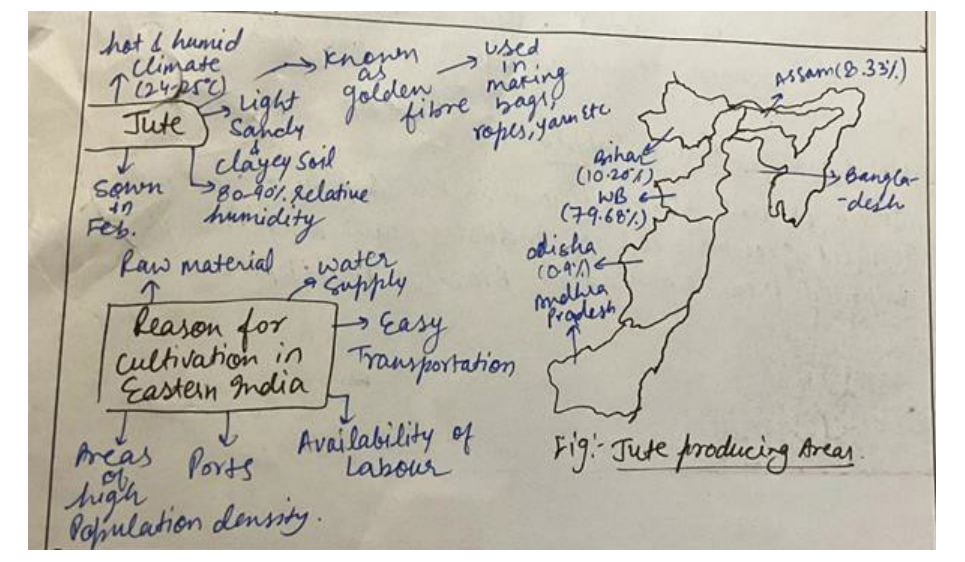
Jute, often referred to as the “golden fiber,” has long been a significant contributor to India’s industrial landscape. The cultivation and processing of jute have played a crucial role in the country’s economy, particularly in the eastern regions. Jute-producing areas in India, predominantly concentrated in states like West Bengal, Bihar, Assam, and Orissa, have historically been the backbone of the jute mill industry. However, in recent years, this once-thriving sector has faced a multitude of challenges leading to a noticeable decline. This decline is attributed to various factors, ranging from shifts in market demand to technological obsolescence, labor issues, and environmental concerns. Examining these causes provides valuable insights into the complex dynamics that have shaped the trajectory of the jute mill industry in India.
Contents
Answer
Jute is biodegradable & Eco-friendly natural fiber. It is in great demand because of the cheapness, softness, strength, length, luster & uniformity of its fiber. The jute industry in India is 150 years old. According to the Indian Jute Mills Association (IJMA), 98% of the total jute in India is produced in West Bengal, Bihar, and Assam.

JUTE INDUSTRIES IN INDIA AND ISSUES
The jute sector provides direct employment to 3.70lakh workers in the country & supports the livelihood of around 40lakh farm families. Cultivation of jute generates employment of more than 10mn man days.
SIGNIFICANCE
- Multiple uses,
- Employment generation
- Environmental friendly
- Agricultural Development
CHALLENGES FACED BY JUTE INDUSTRY
- STIFF COMPETITION
India lags behind Bangladesh in producing superior-quality jute fiber. Bangladesh accounts for 75% of global jute exports while India’s share is 7%. - HIGH RATE OF PROCUREMENT BY MILLS
Mills are producing raw jute at prices higher than what they’re selling them after processing. The government has fixed MSP for raw jute ₹ 4750 per quintal for the 2022-23 season. However, jute reaches the - RAW MATERIAL SUPPLY
- India isn’t self-sufficient in the supply of raw materials. To meet the growing needs of industry, raw material is imported from Bangladesh, Brazil, and the Philippines. mill at ₹ 7200 per quintal.
- CLIMATE CHANGE
Intensified cyclonic activity in the region as a result of climate change has impacted the production of jute e.g., In May 2020, Cyclone Amphan caused considerable damage to the crop. A report by the Commission for Agricultural Costs and Prices (CACP) said that a lower quality of jute fiber was produced in 2020-21 due to the cyclone. Farmers had to harvest the crop prematurely due to water-logging.
STEPS TAKEN TO SUPPORT JUTE INDUSTRY IN INDIA
- Jute Packaging Material (Compulsory use in Packing Commodities) Act, 1987: It mandates that 100% production of foodgrains and 20% of sugar production must be packaged in jute bags.
- JUTE SMART
- It is an e-government initiative that was launched in December 2016 to promote transparency in the jute sector.
- It provides an integrated platform for procurement of sacking by govt agencies.
- JUTE GEO-TEXTILES (JGT)
- It is one of the most important diversified jute products. It can be applied in many fields like civil engineering, soil erosion, road pavement construction, and construction of river banks.
- GOLDEN FIBRE REVOLU AND TECHNO MISSION on jute and musta are two of the
government initiatives to boost jute production in India.
The Jute industry occupies an important place in the national economy of India. It is estimated that the jute industry provides direct employment to 0.37 million workers in organized mills and diversified units including tertiary sector and allied activities and supports the livelihood of around 4.0 million farm families. Besides, there are a large number of persons engaged. The urgent requirement is to modernize, adopt new industry standards and technologies, and progress through
time. Through proper policy changes, the government must assist the jute industry and increase its competitiveness.
In case you still have your doubts, contact us on 9811333901.
For UPSC Prelims Resources, Click here
For Daily Updates and Study Material:
Join our Telegram Channel – Edukemy for IAS
- 1. Learn through Videos – here
- 2. Be Exam Ready by Practicing Daily MCQs – here
- 3. Daily Newsletter – Get all your Current Affairs Covered – here
- 4. Mains Answer Writing Practice – here

